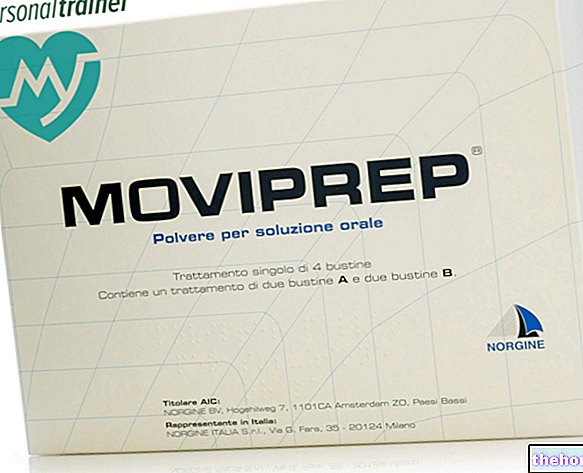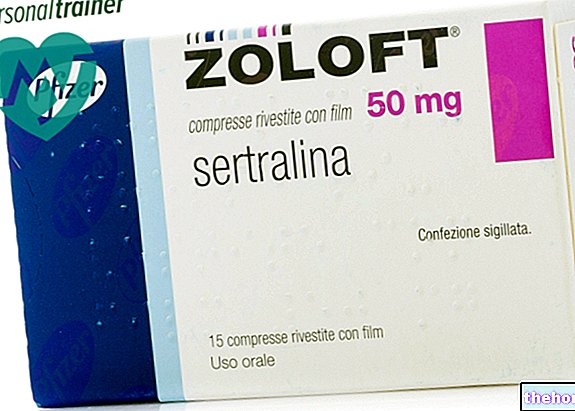Active ingredients: Loteprednol (Loteprednol Etabonate)
LOTEMAX 0.5% Eye Drops, Suspension
Why is Lotemax used? What is it for?
Lotemax is an eye drop, suspension. Lotemax is used to treat post-operative inflammation of the eye.
Sometimes the eye can become inflamed (red and painful). Loteprednol etabonate belongs to a group of drugs called corticosteroids. It works by reducing inflammation and relieving symptoms. Since it is used in small doses directly on the affected part, its action is limited to the area of application.
Contraindications When Lotemax should not be used
Do not use LOTEMAX:
- if you are allergic to the active substance (loteprednolol) or any of the other ingredients of this medicine (listed in section 6).
- if you have been allergic to any corticosteroid.
- if you have eye diseases caused by viruses such as herpes simplex, vaccine rash and chickenpox.
- if you suffer from eye diseases caused by mycobacteria or fungi.
- if you are breastfeeding.
Precautions for use What you need to know before taking Lotemax
Tell your doctor if you have glaucoma.
Tell your doctor if you develop pain, or if the redness, itching or inflammation gets worse.
Consult your doctor if your symptoms do not improve within the first two days.
He / she may want to double check your condition.
You should not use Lotemax for more than ten days unless your doctor has checked your eye pressure.
Long-term use of Lotemax or other steroid-containing eye drops can cause glaucoma or increase eye pressure, with damage to the optic nerve, vision problems and cataracts.
Long-term use of Lotemax or other steroid-containing eye drops may decrease resistance to infections and increase the chances of getting eye infections, including herpes simplex.
Using steroid eye drops such as Lotemax can worsen and prolong the life of viral eye diseases.
Contact lenses
The use of contact lenses after cataract surgery is not recommended.
If you normally wear contact lenses, your doctor will recommend that you wear glasses for a certain period of time following cataract surgery. This is to allow your eyes to heal after surgery. Your doctor will advise you when you can start wearing contact lenses again (see also "Lotemax contains benzalkonium chloride").
Interactions Which drugs or foods may change the effect of Lotemax
Tell your doctor or pharmacist if you are taking or have recently taken any other medicines, including those obtained without a prescription. In particular, tell your doctor if you use:
- medicines known as anticholinergics (used to treat various conditions such as abdominal cramps, muscle spasms, urge incontinence or asthma)
- eye drops used to treat high blood pressure in the eye.
Warnings It is important to know that:
Pregnancy and breastfeeding
If you are pregnant or breast-feeding, think you may be pregnant or are planning to have a baby, ask your doctor or pharmacist for advice before using this medicine.
It is possible that Lotemax will still be prescribed for you, but it is also possible that an alternative will be used.
Lotemax should not be used during breastfeeding.
Driving and using machines
The eye drops may blur your vision. This usually passes quickly. Do not drive or use machines until your vision has returned to normal.
Lotemax contains benzalkonium chloride
The preservative Benzalkonium Chloride can cause eye irritation.
Avoid contact with soft contact lenses.
Remove contact lenses before fitting and wait at least 15 minutes before reapplying. Benzalkonium chloride is known to discolour soft contact lenses.
Dose, Method and Time of Administration How to use Lotemax: Posology
Always use this medicine as your doctor or pharmacist has told you. If you are not sure, ask your doctor or pharmacist. The recommended dose in adults and the elderly is 1-2 drops four times a day. Lotemax treatment normally begins 24 hours after surgery and continues for two weeks.
Use in adults
- Shake Lotemax bottle well before use.
- Look up and carefully pull down the lower lid of the affected eye
- Instill one to two drops of Lotemax in the area between the eyeball and the eyelid, four times a day or as prescribed.
- Do not allow the mouth of the bottle to come into contact with any surface, as this can contaminate the medicine.
- Close the bottle immediately after use
Your doctor will advise on the duration of treatment with Lotemax.
Do not stop treatment without first consulting your doctor.
Use in children and adolescents
Lotemax should not be used in children and adolescents until new data become available.
If you forget to use Lotemax
Do not take a double dose to make up for a forgotten dose. Wait until the next application and continue as normal.
If you stop taking Lotemax
Use this medicine exactly as your doctor has told you. Do not stop using Lotemax without talking to your doctor first.
If you have any further questions on the use of this medicine, ask your doctor or pharmacist.
Overdose What to do if you have taken too much Lotemax
If you use more Lotemax than expected, please tell your doctor or pharmacist.
Side Effects What are the side effects of Lotemax
Like all medicines, this medicine can cause side effects, although not everybody gets them.
If you experience any of the following symptoms: redness, itching or swelling of the membrane covering the white part of the eye and / or the eyelid (s) or generalized symptoms such as difficulty in breathing, difficulty in swallowing, redness or redness of the face and swelling of the face or you should stop using this medicine and seek medical help immediately.
These can be signs of a severe allergic reaction.
As you may need urgent medical attention, contact your doctor immediately if you experience any of the following adverse events:
- worsening of eye pain, especially when exposed to bright light and eye redness while using the medicine. This may be due to inflammation of the colored part of the eye, called iritis - uncommon side effect (may occur up to 1 subject out of 100)
- lump or thickening in one area of the breast, change in size, shape or tenderness in the breast, swelling or lump in the armpit or change in the shape of the nipple. These may be symptoms of breast cancer, which is a rare side effect (may occur in up to 1 in 1,000 people)
- involuntary muscle contraction (muscle nervousness) - rare side effect (may affect up to 1 in 1,000 people)
- nervousness - rare side effect (may affect up to 1 in 1,000 people)
- noise (ringing) in the ears (tinnitus) - rare side effect (may affect up to 1 in 1,000 people)
- chest pain - rare side effect (may affect up to 1 in 1,000 people). The following side effects listed below may occur during treatment with this medicine:
Common side effects (may affect up to 1 in 10 people):
Ocular side effects: corneal defects, ocular discharge, discomfort in the eye, dry eye, tearing, foreign body sensation in the eye, eye redness, eye itching, burning sensation at the instillation site and increased intraocular pressure. Burning sensation at the instillation site and increased intraocular pressure.
General side effects: headache.
Uncommon side effects (may affect up to 1 in 100 people):
Ocular side effects: abnormal vision, blurred vision, swelling of the conjunctiva, conjunctivitis, eye irritation, eye pain, mild lifting of the conjunctiva, sensitivity to light, eye inflammation, inflammation of the cornea and conjunctiva, eye infection and clouding of the lenses.
General side effects: fatigue, runny nose and sore throat.
Rare side effects (may affect up to 1 in 1,000 people):
General side effects: headache, taste distortion, feeling dizzy, numb, feeling cold, fever and pain, cough, urinary tract infection or inflammation, hives, rash, dry skin, eczema, diarrhea, nausea and vomiting, increased blood pressure weight.
Reporting of side effects
If you get any side effects, talk to your doctor or pharmacist. This includes any possible side effects not listed in this leaflet. You can also report side effects directly via www.agenziafarmaco.it/it/responsabili.
By reporting side effects you can help provide more information on the safety of this medicine.
Expiry and Retention
Keep this medicine out of the sight and reach of children.
Store the container upright.
Store at a temperature not exceeding 25 ° C. Do not freeze.
Do not use this medicine after the expiry date which is stated on the carton and bottle after Expiry. The expiry date refers to the last day of that month.
Discard the product 28 days after opening.
Do not throw away any medicines via wastewater or household waste.
Ask your pharmacist how to throw away medicines you no longer use. This will help protect the environment.
DO NOT USE IF THE PROTECTIVE SEAL IS NOT INTACT
Other Information
What Lotemax contains
- The active ingredient is Loteprednonol etabonate. Each ml contains 5 mg (0.5%) of Loteprednol Etabonate.
- The other ingredients are: Disodium Edetate, Glycerol, Povidone, Purified Water and Tyloxapol.
- Benzalkonium Chloride (0.01%) is added as a preservative.
- Sodium hydroxide and / or hydrochloric acid are added to adjust the pH.
Description of what Lotemax looks like and contents of the pack
Lotemax is a milky suspension eye drops. Lotemax is available in bottles of 2.5ml, 5ml, or 10ml.
Not all pack sizes may be marketed.
Source Package Leaflet: AIFA (Italian Medicines Agency). Content published in January 2016. The information present may not be up-to-date.
To have access to the most up-to-date version, it is advisable to access the AIFA (Italian Medicines Agency) website. Disclaimer and useful information.
01.0 NAME OF THE MEDICINAL PRODUCT
LOTEMAX 0.5% EYE DROPS, SUSPENSION
02.0 QUALITATIVE AND QUANTITATIVE COMPOSITION
The suspension contains 0.5% w / v of Loteprednol Etabonate (5mg / ml). Each drop contains 0.19 mg of Loteprednol Etabonate.
Excipient with known effects: Benzalkonium Chloride (0.01%).
For the full list of excipients, see section 6.1.
03.0 PHARMACEUTICAL FORM
Eye drops, suspension.
Milky.
04.0 CLINICAL INFORMATION
04.1 Therapeutic indications
Treatment of postoperative inflammation following eye surgery.
04.2 Posology and method of administration
Dosage
Adults and the elderly
One to two drops four times a day, beginning 24 hours after surgery and continuing throughout the postoperative period.
The duration of treatment should not exceed 2 weeks.
Pediatric population
LOTEMAX should not be used in pediatric subjects until further data become available.
Method of administration
For ophthalmic use.
Shake the bottle well before using the eye drops.
From the moment it is packaged, the product is sterile. Patients should be advised that the mouth of the bottle should not touch any surface, as this can contaminate the suspension.
The bottle must be closed immediately after use.
04.3 Contraindications
LOTEMAX is contraindicated in the presence of most viral diseases of the cornea and conjunctiva, such as herpes simplex epithelial keratitis (dendritic keratitis), vaccine rash, chicken pox and also in mycobacterial infections of the eye, fungal diseases of the ocular structures, purulent infections acute untreated which, similar to other infectious diseases, can be masked and aggravated by corticoids, "red eye" with unknown diagnosis and infection caused by amoeba.
Hypersensitivity to the active substance or to any of the excipients listed in section 6.1 or to other corticosteroids.
04.4 Special warnings and appropriate precautions for use
Prolonged use of corticosteroids can cause ocular hypertension or glaucoma, with damage to the optic nerve, decreased visual acuity and visual field, and posterior subcapsular cataract formation. Steroids should be used with caution in the presence of glaucoma.
Prolonged use of corticosteroids can suppress the immune response and increase the possibility of secondary ocular infections. In diseases that cause thinning of the cornea or sclera, perforations due to the use of topical steroids have been found. In situations of acute purulence of the eye, steroids can mask the infection or exacerbate any existing infection.
Continued treatment with corticosteroids can cause fungal infections. In case of persistence of corneal ulcer, a fungal infection should be considered in the differential diagnosis.
LOTEMAX contains benzalkonium chloride which may cause eye irritation.
Generally, patients should not wear contact lenses after cataract surgery unless their use has been directed by their physician.
The use of soft contact lenses should be avoided. Patients should be advised to remove contact lenses before fitting and to wait at least 15 minutes before reinserting them. Soft contact lens blurring is known.
If signs and symptoms do not improve after two days, the patient should be re-checked. If the product is used for 10 days or more, intraocular pressure should be monitored.
04.5 Interactions with other medicinal products and other forms of interaction
Since loteprednol etabonate is not detected in plasma following topical administration of Lotemax, it is not expected to affect the pharmacokinetics of systemically administered medicinal products. However, the low probability that Loteprednol Etabonate-based eye drops increase intraocular pressure may be adversely affected by the systemic administration of anticholinergic drugs.
In patients undergoing concomitant ocular hypotensive therapy, administration of loteprednolol etabonate may increase intraocular pressure and decrease the apparent ocular hypotensive effect of these drugs.
Co-administration of cycloplegics may increase the risk of elevated intraocular pressure.
Concomitant treatment with CYP3A inhibitors, including cobicistat-containing medicines, is thought to increase the risk of systemic side effects. The combination should be avoided unless the benefit outweighs the increased risk of systemic side effects due to corticosteroids, in which case patients should be monitored for the absence of systemic side effects due to corticosteroids.
04.6 Pregnancy and breastfeeding
Pregnancy
No clinical data are available on the use of LOTEMAX during pregnancy. Studies in animals have shown reproductive toxicity (see section 5.3). The potential risk for humans is unknown, and LOTEMAX should not be used. in pregnancy unless your doctor deems it necessary.
Feeding time
There is no information on the possible excretion of Loteprednol Etabonate in human milk. The excretion of Loteprednol Etabonate in breast milk has not been studied in animal research. Therefore, the use of Loteprednol Etabonate is contraindicated in lactating women.
04.7 Effects on ability to drive and use machines
No specific studies on the effects on the ability to drive and use machines have been performed.
Should any transient effect on vision occur, the patient should be advised to wait until this effect has ceased before driving or operating machinery.
04.8 Undesirable effects
Among the reactions associated with the use of ophthalmic steroids, elevated ocular pressure can be expected in patients sensitive to steroids, which may be associated with damage to the optic nerve, decreased acuity and visual field, formation of posterior subcapsular cataract, secondary eye infections resulting from pathogenic factors including herpes simplex, perforation of the eyeball at the thinning of the cornea or sclera.
Clinical studies have indicated the following adverse effects in patients treated with Loteprednol Etabonate ophthalmic suspension.
All undesirable effects were classified as follows from very common (> 1/10), common (> 1/100, 1/1000, 1 / 10,000,
Eye disorders
Common: Corneal defect, ocular discharge, ocular disorder, dry eye, epiphora, foreign body sensation in the eye, conjunctival hyperaemia and ocular itching.
Uncommon: Abnormal vision, blurred vision, chemosis, conjunctivitis, iritis, eye irritation, eye pain, conjunctival papillae, photophobia and uveitis.
Reactions at the application and instillation site
Common: Burning on instillation
Uncommon: Keratoconjunctivitis
Some of the aforementioned effects were attributable to the presence of the ocular pathology studied.
Non-ocular events presumably related to treatment in patients include:
Nervous System Pathologies
Common: Headache
Rare: Migraine, taste disturbance, vertigo, paraesthesia
General disorders and administration site conditions
Uncommon: Asthenia
Rare: Chest pain, chill, fever and pain
Respiratory, thoracic and mediastinal disorders
Uncommon: Rhinitis
Rare: Cough
Infections and Infestations
Uncommon: Pharyngitis
Rare: Urinary tract infections and urethritis
Skin and subcutaneous tissue disorders
Rare: Face edema, hives, rash, dry skin and eczema
Gastrointestinal disorders
Rare: Diarrhea, nausea and vomiting
Diagnostic tests
Rare: Weight gain
Ear and labyrinth disorders
Rare: Tinnitus
Neoplasm benign, malignant and unspecified (including cysts and polyps)
Rare: breast cancer
Musculoskeletal and connective tissue disorders
Rare: Muscle spasm
Psychiatric disorders
Rare: Nervousness
From multiple randomized controlled trials conducted in patients treated for 28 days or more with Loteprednol Etabonate, the incidence of a significant increase in intraocular pressure (≥10 mmHg) was 2% (15/901) among patients in whom Loteprednol etabonate was administered, 7% (11/164) among those administered 1% Prednisolone Acetate and 0.5% (3/583) among those treated with placebo.
Reporting of suspected adverse reactions
The reporting of suspected adverse reactions that occur after the authorization of the medicinal product is important, as it allows continuous monitoring of the benefit / risk ratio of the medicinal product. Healthcare professionals are asked to report any suspected adverse reactions via the Italian Medicines Agency. , website: http://www.agenziafarmaco.gov.it/it/responsabili.
04.9 Overdose
No cases of overdose have been documented. & EGRAVE; Acute overdose is unlikely to occur by the ophthalmic route.
05.0 PHARMACOLOGICAL PROPERTIES
05.1 Pharmacodynamic properties
Pharmacotherapeutic group: Corticosteroids, ATC code: S01BA14
Mechanism of action.
Corticosteroids suppress the inflammatory response by stimulating agents of a mechanical, chemical or immunological nature. No universally agreed explanation has been put forward for this steroid property.
Pharmacodynamic effects
Loteprednol Etabonate constitutes a new class of corticosteroids characterized by a powerful anti-inflammatory action, designed to be active in the instillation area. This anti-inflammatory action is similar to that of the more potent steroid used in ophthalmology, but with a lower intraocular pressure. Animal studies have shown that Loteprednolol has a 4.3 times higher affinity to bind steroid receptors than dexamethasone. This new class of steroids consists of bioactive molecules whose transformation in vivo in non-toxic substances it can be assumed on the basis of their chemical composition and knowledge of the enzymatic pathways in the organism. Cortenoic acid is an inactive metabolite of hydrocortisone and the analogues of this acid have no corticosteroid activity. Loteprednolol Etabonate is an ester derived from one of the above analogues, etabonate cortenoic acid.
Clinical efficacy and safety
Placebo-controlled studies have shown that LOTEMAX is significantly more effective than placebo for the treatment of external eye inflammation.
Corticosteroids can raise intraocular pressure in sensitive individuals. In a small study, LOTEMAX was shown to produce significantly delayed blood pressure rise compared to that produced by Prednisolone Acetate. The total number of patients who had an intraocular pressure elevation ≥ 10 mm Hg was lower in patients treated with LOTEMAX. In many patients treated with LOTEMAX, the highest increase in intraocular pressure found did not reach the levels seen in patients treated with Prednisolone Acetate. In clinical studies, only 2% of all patients had an increase in intraocular pressure of ≥ 10 mm Hg. In the small percentage of patients who had a significant increase in intraocular pressure, this rapidly returned to normal levels on discontinuation of the drug.
Pediatric population
No data are available in the pediatric population.
05.2 Pharmacokinetic properties
Results from oral and ocular administration of LOTEMAX in healthy volunteers showed low or unquantifiable concentrations of the unchanged active substance or metabolite. The results of a bioavailability study established that plasma concentrations of Loteprednol etabonate following ocular administration of one drop of LOTEMAX per eye 8 times a day for 2 days or 4 times a day for 42 days were below quantifiable limits ( 1 ng / ml) and at the detection limits (500 pg / ml) in all sampling phases. In the same study, plasma cortisol concentrations were measured, and there was no evidence of suppression of the adrenal cortex. All cortisol values were within normal limits. The study suggested that the systemic absorption of LOTEMAX is limited if not zero.
05.3 Preclinical safety data
Preclinical data obtained from conventional studies of repeated dose toxicity and genotoxicity do not highlight any particular risk for humans.
Embryotoxicity and teratogenic effects were observed in reproductive toxicity studies conducted in rabbits (delayed ossification, high incidence of meningocele, abnormal left carotid artery and collapse of limbs) when oral doses were administered 35 times the maximum daily clinical dose, and in rats (fetal weight loss and decreased skeletal ossification, missing anonymous artery, perforation of the palatal velum and umbilical hernia) when oral doses more than 60 times the maximum daily clinical dose were administered.
In both acute and repeat dose studies in rabbits, a mild form of eye irritation was noted.
06.0 PHARMACEUTICAL INFORMATION
06.1 Excipients
Disodium edetate
Glycerol
Povidone
Purified water
Tiloxapol
Hydrochloric acid (pH regulator)
Sodium hydroxide (pH regulator)
Benzalkonium Chloride
06.2 Incompatibility
In the absence of incompatibility studies, this medicinal product must not be mixed with other medicinal products.
06.3 Period of validity
2 years (closed).
Do not use the product 28 days after first opening the bottle.
06.4 Special precautions for storage
Store at temperatures not exceeding 25 °. Do not freeze.
Store the container upright.
06.5 Nature of the immediate packaging and contents of the package
LOTEMAX is available in the following packages:
2.5ml and 5ml supplied in a white low density polyethylene bottle (7.5ml) with a white dropper and a pink polypropylene cap
10 ml supplied in a white low density polyethylene bottle (10 ml) with a white dropper and a pink polypropylene cap
Not all pack sizes may be marketed.
06.6 Instructions for use and handling
Store the container upright
07.0 MARKETING AUTHORIZATION HOLDER
Bausch & Lomb-IOM S.p.A. - Viale Martesana, 12 - 20090 Vimodrone (MI), Italy
08.0 MARKETING AUTHORIZATION NUMBER
LOTEMAX 0.5% suspension eye drops:
bottle of 2.5 ml A.I.C .: 036668010
bottle of 5 ml A.I.C .: 036668022
10 ml bottle A.I.C .: 036668034
09.0 DATE OF FIRST AUTHORIZATION OR RENEWAL OF THE AUTHORIZATION
Date of first authorization: June 2005
Date of most recent renewal: June 2010
10.0 DATE OF REVISION OF THE TEXT
April 2017




























